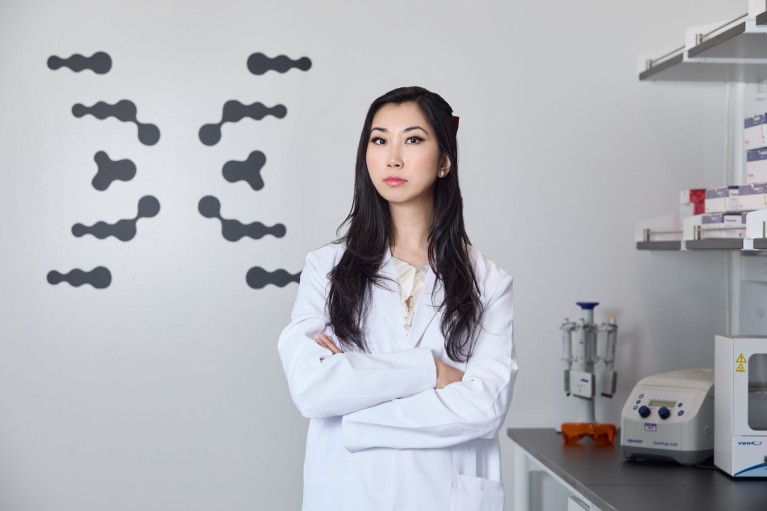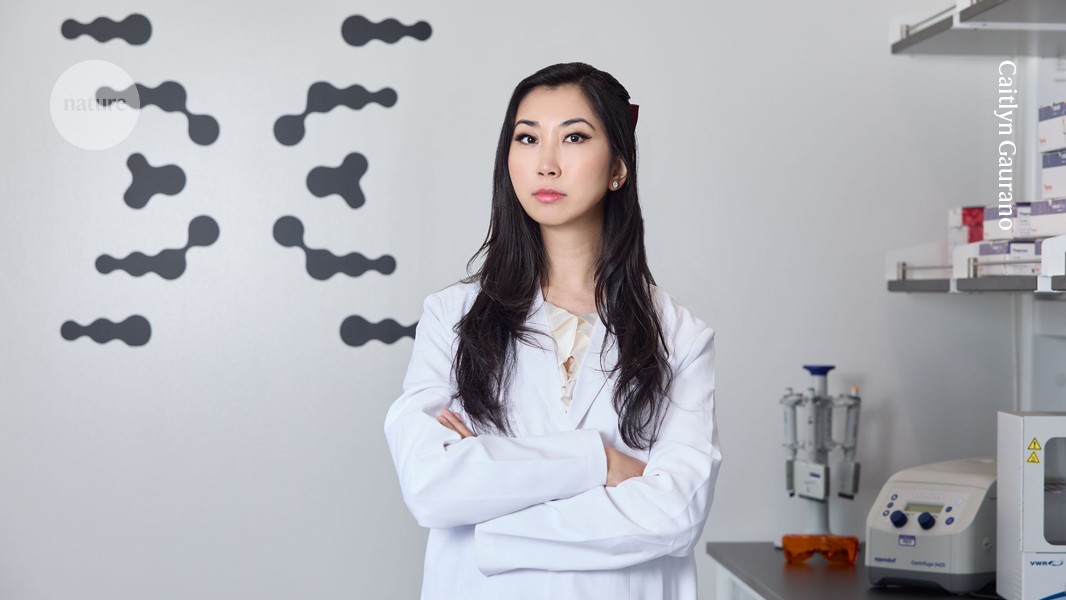
Entrepreneur Cathy Tie’s company Manhattan Genomics will work on methods to edit the genomes of human embryos. Credit: Caitlyn Gaurano
Cathy Tie left university to found her first biotechnology company at the age of 18. In the 11 years since, she has launched several more. Her first company helped genetic-testing firms to interpret their results; her second provides digital health-care services.
Her latest venture, which announced some of its first key hires on 30 October, veers out of the mainstream. Tie, who has called herself Biotech Barbie, sometimes refers to her latest company as the Manhattan Project — the name used for the US effort to develop an atomic bomb in the 1940s — and now focuses her entrepreneurial ambitions on a controversial goal: altering the genome of human embryos to prevent genetic disorders.
Why CRISPR babies are still too risky — embryo studies highlight challenges
“We have a duty to patients with incurable, debilitating diseases,” says Tie. “A majority of Americans are in support of this technology.”
Plenty of scientists, however, are worried. Manhattan Genomics, the official name of her latest company, based in New York City was launched this summer. Tie co-founded the firm with Eriona Hysolli, former head of biological sciences at Colossal Biosciences, a Dallas, Texas firm focused on de-extincting species. Another company called Preventive in South San Francisco, California, announced on 30 October that it also intends to explore gene editing in human embryos.
So far, neither company has revealed the details of its scientific plans, such as which diseases it will target, and which techniques it will use. Tie says Manhattan Genomics will conduct extensive research and safety testing before attempting to create gene-edited babies. Among the new employees announced this week are a bioethicist and two scientists with expertise in non-human primate reproductive biology — skills that would be needed for testing the safety of embryo editing.
Even so, some researchers say it is much too early to consider commercializing gene-editing technologies for human embryos — a process that carries added safety risks and ethical quandaries compared with the gene-editing therapies that are currently on the market to treat blood conditions in children and adults.
“The bar for safety is so, so, so, so high,” says Alexis Komor, a biochemist at the University of California San Diego, who studies gene-editing technologies. “We’re definitely not there yet.”
CRISPR therapies
For years, the gene-editing field has laboured in the shadow of He Jiankui, a Chinese biophysicist who, in 2018, announced that he had edited human embryos to bolster the resulting children’s resistance to HIV. Those embryos were implanted into the mother, and two gene-edited girls were born. He was then sentenced to three years in prison for “illegal medical practice”. (Tie and He had a personal relationship earlier this year, but Tie says the two have since parted and that He is not involved in Manhattan Genomics.)
Scientists largely condemned his work, with many calling for a moratorium on all clinical uses of heritable gene editing in humans. Some countries have restrictions on such research. In the United States, for example, federal funds cannot be used for gene-editing studies in human embryos, and the US Food and Drug Administration cannot approve clinical use of genetically manipulated embryos.
Amid this turmoil, gene editing in non-reproductive cells has raced ahead. The world’s first approved gene-editing therapy uses the DNA-snipping system called CRISPR–Cas9 to edit DNA in blood stem cells. The therapy, which was approved in 2023, treats two genetic blood disorders. Earlier this year, a related method called base editing was used to edit DNA of liver cells in a bespoke treatment for an infant with a metabolic disorder.
Side effects
But editing non-reproductive cells is different, ethically and scientifically, from editing embryos, says Junjiu Huang, a biologist who studies reproductive development at Sun Yat-sen University in Guangzhou, China. Gene-editing tools might behave differently in an embryo than in non-reproductive cells. Editing an embryo also means that genetic changes will be passed down to the next generation, with consequences that are difficult to predict.
Unwanted DNA changes — a possibility with any gene-editing technology — could have more catastrophic effects in the embryo than in a single organ, because they can affect every cell in the body during crucial stages in development, says Komor. And a vanishingly small number of people would need to edit genes in their embryos, she says, given that many can already use genetic tests to screen embryos for disease-causing mutations.
Tie and Hysolli note that methods used to edit genes have evolved considerably since He’s experiments. Newer techniques, such as base editing and another approach called prime editing, offer improved precision compared with conventional CRISPR–Cas9 editing. Neither of these techniques require breaking both strands of DNA, a necessity for the original CRISPR gene-editing method and a step that can cause drastic chromosomal changes in embryos. “A lot of new advances have happened in the gene-editing space to make it safer and more accurate,” says Tie.

Eriona Hysolli, who co-founded Manhattan Genomics, is a veteran of de-extinction company Mammoth Biosciences.Credit: Caitlyn Gaurano
But researchers are still learning the full gamut of unwanted genetic changes that base editing can cause, says Komor. Even less is known about newer methods such as prime editing, she adds.
In 2015, Huang and his colleagues were the first to gene edit human embryos1. (The embryos were not implanted in a mother.) Since then, he has continued to work with embryos using base editing, and says the technique holds promise, but is not ready for the clinic. Hysolli agrees that the methods need to be studied further, particularly in embryos. The approach that Manhattan Genomics eventually chooses will be dictated at least in part by the diseases it decides to focus on first, she says.
Huang describes the timing of Manhattan Genomics’ launch as “inappropriate”. The technology is not yet mature, he says, nor are the ethics, social consensus and legal framework for the technology’s use.



